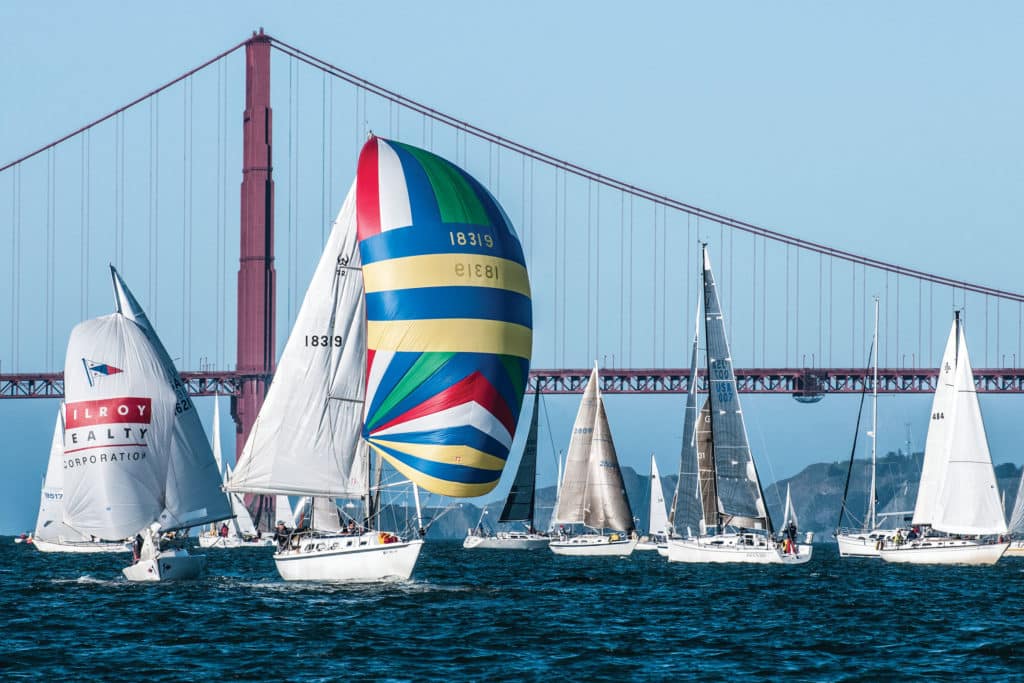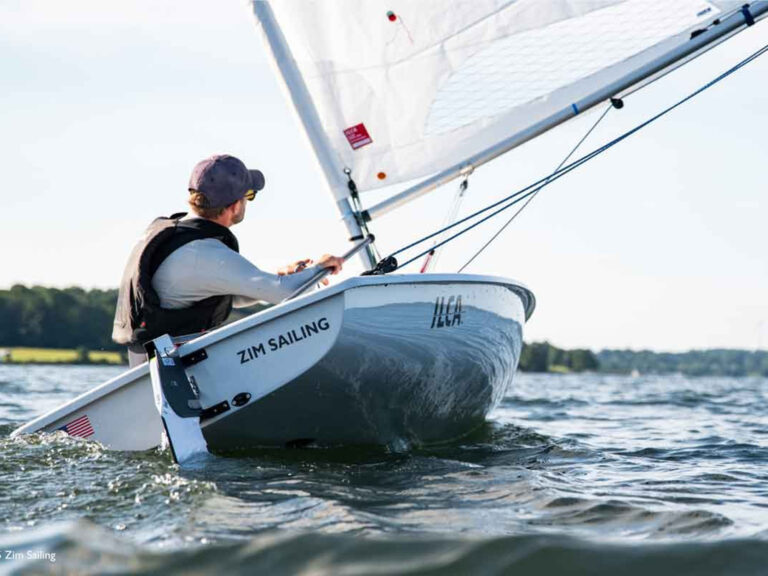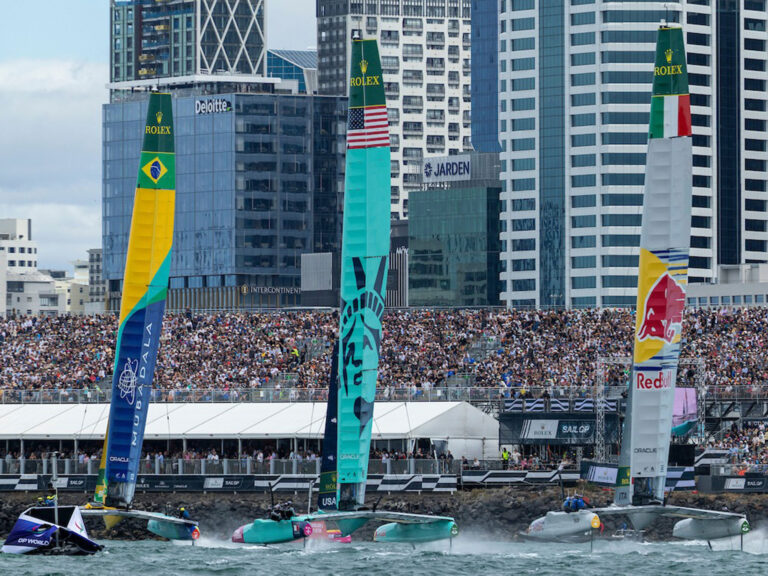We’ve refined the perfect windward/leeward racecourse. Our perfect race officers wait for the perfect wind, and our perfect race crews exhibit perfection. There is nothing wrong with this, except not every regatta is a championship. We need to curb our obsession with the pursuit of excellence. The fun is getting squeezed out.
The desire to improve, to make things better, is commendable and expected. This is trickle down from elite events like the Olympics and the America’s Cup. Some of it is trickle up from refined junior racing teams. Plus, top sailors are often the most active, and likely the most vocal. They want to excel in the big regattas, so they must prepare. This has caused the little events to look more like the big ones. But better isn’t always best.
Is the current race format—with big colored inflatable marks aligned perfectly to the wind—offering racers a highly tactical windward/leeward course, but not what they really want?
Stan Honey, the mastermind behind the perfect America’s Cup broadcast, doesn’t necessarily think so. “Maybe folks figure that well-run windward/leeward races in open water, run by professional PROs, tend to get won by the same folks, and so folks that are unlikely to do well lose interest.”
What makes sailing different, as a sport, is that it’s also recreation. It’s something we can do for a long time. It can be our social structure. It should be our identity. We’re not supposed to get burned out. Sure, there are professionals amid all this recreation—there always have been. But it’s mostly people who do it for fun.
“While I wouldn’t say that we need more ‘screwed up’ events, I think that we need events that have enough unusual or unpredictable elements so that folks will expect it to be interesting, and they won’t take it too seriously if they don’t do well,” says Honey.“Well-sailed boats still win, but more boats turn out for the interesting events. We still need to have the serious, fair, professionally-run,windward/leeward races, in open water, but it would be good for our sport to have other interesting events in addition that are fun and just enough of a crapshoot to get less serious sailors to come out and have a go.”
I’m painting with a pretty broad brush. There’s danger in that. But plenty of races haven’t gotten consumed by perfection. Allow me to share, by way of example, two West Coast classics.
Three Bridge Fiasco
This pursuit-start handicap race in San Francisco is open to single- or doublehanders, with the course only requiring entrants to round marks near three prominent bridges. Racers can round them in any order, and can even cross the start line in either direction.
This attracts the most entrants of any event on the local calendar: 357 boats raced in it this January.
“Strategically, the open-course format combined with tide and predicted breeze make for a myriad of tactical options to deal with,” says Express 27 national champion Nick Gibbons. “Sometimes I have changed my mind about our preferred direction in the last two minutes before the start. This race attracts the Bay’s best sailors because of the unique challenge of getting around the Bay faster than all the other top sailors, and it attracts sailors newer to racing for those same reasons—the playing field is not level. Plus, the doublehanded component makes for a great day on the water with a friend.”
Different is a big part of the appeal. “The windward/leeward races in San Francisco Bay are not that appealing because of the typical one-way racecourse due to the currents,” says local professional Seadon Wijsen. “Random courses are much more popular because they don’t put a premium on good starts or great boatspeed and boathandling. Also, yacht clubs continue to use the same courses for their regattas, so races tend to get old and people lose interest. The Three Bridge course configuration invites a lot of pre-race strategy and numerous tactical decisions during the race, which never gets old.”
Hot Rum Series
A series of three pursuit-start random-leg races is held every other weekend in San Diego, with the course covering 12 miles through the inner bay and ocean. The marks are always in the same locations, regardless of wind direction. It draws a huge crowd, from America’s Cup winners to newbies. It’s so not perfect that it’s perfect.
“The Hot Rum course is surprisingly tactical,” says Etchells world champion crew and offshore guru Erik Shampain. “With more than a hundred boats mixing it up, every mark rounding takes planning and careful execution. Finding a lane on any of the five legs is challenging. Getting it all right and performing well is very rewarding. Since I sail professionally, typically crewing for somebody else, I sail the Hot Rum Series for myself, to be close with my father, my family, and my friends. We laugh, we joke, we sail hard, and even when it’s raining, it’s fun.”
Among the largest fleets is the J/105, with local champion Dennis Case often in the lead. “I love the Hot Rum races,” says Case. “It’s a change of pace from windward/leeward races, and we get to race with people and boats that we never otherwise would—other one-designs and PHRF boats. The legends in the racing world are competing with the average Joe, and sometimes the average Joe comes out on top. Some expert designed the simple course. It’s simple to crew, fair to race, and complex for the skipper/tactician. It’s fun for all, and there’s great storytelling afterward.”
This, dear reader, is where you come into the plan. No, not the top sailors, but the rest of you that make up the bulk of the fleet. Flood the mailbox of your yacht racing association or fleet captain and tell them you want it to be fun. Don’t sweat the perfection. Sweat the fun.

San Francisco Bay’s Three Bridge Fiasco






